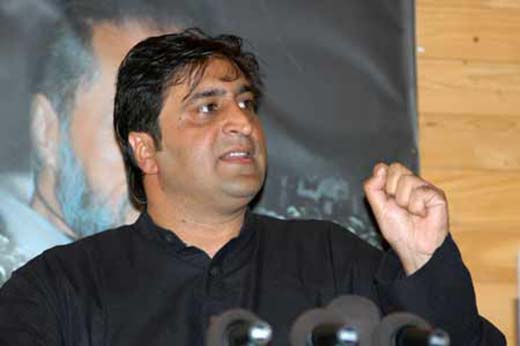by Ovais Gora and Umar Hayat

SRINAGAR: Snow-clad mountain peaks of Pahalgam, where land dissolves into the sky is the home of numerous glaciers. These thick snow blankets had covered these summits for centuries. The largest one among these is Kolahoi Glacier. Every year large amount of nature admiring people ascends the mountain Kolahoi to have the glimpse of its glaciers—and to get experience, which fixates them for lifetime.
And for the hamlets of Pahagam, Mount Kolahoi means a place on which sun shines first. The beauty of pristine Kolahoi is nestling deep in the memories of the Gujjars who spent their childhood in the vicinity of these ‘Frozen Factories of Water’.
For an elderly man, Bashir Ahmad—who belongs to Gujjar community, memories of his childhood tramping the snow field are still verdant. “Since our childhood, we have been enthralled by the beauty of the glacier,” he says. “Though we resided down at bottom of the Mt. Kolahai, but we used to tread up to its summit in our early days.” Bashir says, splendours of the mountain peaks are hard to overlook, “but due to some unknown reason, hallow patches have developed on the face Kolahai glacier.”
The Kolahoi glacier not only quenches the aesthetic thirst—rather its meltdown trickles down water through the verdant mountains in the forms of numerous rivulets. The flow keeps the life on toes—by catering to irrigation and portable water to the vast area.
Small streamlets carrying the glacier water of Mount Kolahoi merges at the base of lush and verdant Lidder Valley—and contributes mammoth portion to West Lidder. The West Lidder after traversing 24km merges with East Liddar at Pahalgam, and gives rise to famous River Lidder—the jugular vein for the Agriculture and drinking purpose. Lidder, which is flowing at tremendous speed for some years, heralds the swansong of Kolahoi glacier.
“Liddar River is the basic fabric of our existence,” said Abdul Yaseen, a farmer from Mattan, Islamabad. “Our livelihood is solely dependent on the water coming from Liddar. Whether it is for irrigational or drinking purpose, we are squarely dependent upon it.”
Of late, the Mount Kolahoi is getting stripped from its frozen white blanket—as haste melting has set in it. Experts warn that the bond is at its last leg and this separation is posing a serious threat to the flora and fauna of its catchment area.
The inhabitants of its catchment are speculating the increasing gush of River Lidder—as its generosity, and envisage a boom in agriculture sector.
But the story is all together different! The melting glacier is giving sleepless nights to the geologists who claim that Kolahoi glacier is at the verge of its extinction.
“In the past 30 years, the Kolahoi glacier which used to be a little more than 11 sq km has shrunk to 2.63 sq km,” notes the study titled as ‘Climate change, Glacier retreat and livelihood’. This study was conducted by Shakil Ramsoo, Assistant Professor, and Department of Geology Kashmir University.
“Kolahoi glacier is shrinking 0.08 square kilometers a year, which is an alarming speed,” says Shakeel Ramsoo, who has extensively worked on the glaciers of Kashmir. “The global warming is the main cause for the depletion of this glacier.”
Fast melting rate of Kolahai Glaciers is alarming to the people who are directly or indirectly dependant on the Liddar River. While considering the pace of melting, it is not hard to envisage the posterity will be deprived of the major source of water for irrigation and other purposes.
After snow melts in May or June, the water sources exhaust in the valley. Since Kolahoi is the only permanent source of water, it plays a sheet anchor role.
Now the growing concern remains in case it disappears, there will be a considerable influence on the hydrological system of the valley. Though the signs are not visible on the ground, there are numerous streamlets up in the Mount Kolahoi which narrates its tale that they were once messengers of meltdown water.















